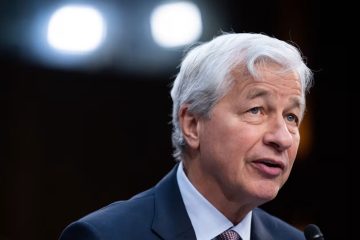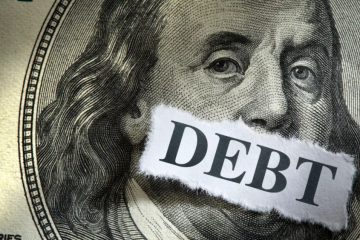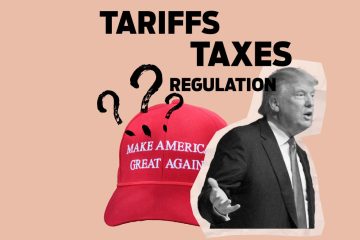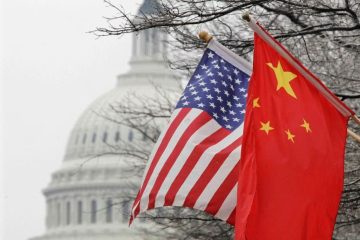Why Trump Is Right About Tariffs

Economists have reacted poorly to Donald Trump’s recent proposal for a 10% tariff on all imports. Adam Posen, president of the Peterson Institute for International Economics, called it “lunacy” and “horrifying.” According to Michael Strain, director of economic policy studies at the American Enterprise Institute, it would be “a disaster for the U.S. economy.”
But why? After all, tax revenue is necessary to provide public services, and tariffs have long proved an effective way to collect it. In 1789, the first law in the first Congress—advocated by Alexander Hamilton, introduced by James Madison and signed by George Washington on the Fourth of July—established a tariff not unlike Trump’s. For much of the nation’s history, while growing from colonial backwater to continent-spanning industrial colossus, the U.S. imposed some of the world’s highest tariffs, which were the primary means of funding the federal government.
Tariffs are distinctive as a source of revenue because they tilt the market away from imports and toward domestic production. Whether that’s desirable or disastrous hinges on a series of questions that go to the heart of economic thinking: Does making things matter? Do a nation and its economy require a strong industrial base? Is a persistent trade deficit a problem?
Common sense, historical precedent and a great deal of economic logic and research suggest that the answer to these questions is yes. Domestic production has value to a nation, so a tariff that gives it preferential treatment can be sensible and even, to use the economist’s favored term, efficient. Large, persistent trade deficits are bad for America, which means a tax on imports can help.
One reason that making things matters is that the economy’s growth and dynamism depend on it. As Harvard University’s Ricardo Hausmann and the Massachusetts Institute of Technology’s Cesar Hidalgo have shown in their research on “economic complexity,” a nation’s ability to produce a wide range of sophisticated goods shape its future economic performance. “Countries grow based on the knowledge of making things,” says Hausmann. “It’s not years of schooling. It’s what are the products that you know how to make.”
Andy Grove, Intel’s legendary CEO in its era of global dominance, offered a related observation about manufacturing’s role in innovation. “Our pursuit of our individual businesses, which often involves transferring manufacturing and a great deal of engineering out of the country, has hindered our ability to bring innovations to scale at home,” he warned. “Without scaling, we don’t just lose jobs—we lose our hold on new technologies. Losing the ability to scale will ultimately damage our capacity to innovate.” Grove’s solution was “an extra tax on the product of offshored labor.” That is, a tariff.
Making things also matters because the industrial economy provides an invaluable foundation for thriving local economies nationwide. While the U.S. economy now consists predominantly of services, a community cannot thrive on cutting hair, serving fast food and delivering packages alone. Undergirding the service sector there must be an industrial sector where people can create tradeable products, sent to the outside world for the many things the community needs and does not make itself. Industrial activity also tends to have a much higher “multiplier effect,” rippling outward into greater local employment and investment.
And making things matters to national security. As Adam Smith acknowledged, it is “advantageous to lay some burden upon foreign, for the encouragement of domestic industry…when a particular industry is necessary for the defence of the country.” In the 1700s, the principle seemed narrow, applying for instance to sailcloth and gunpowder.
But in a modern industrial economy, fielding a technologically sophisticated military and protecting the home front in times of crisis requires not only building and repairing billion-dollar warships but also the fabrication of advanced semiconductors, processing of rare earth elements and synthesis of pharmaceutical precursors. Each of these relies on its own complex supply chains, skilled workforce and long-term capital investments.
If global trade were working as promised, these concerns might be moot. Explaining the premise of international trade, Smith observed, “if a foreign country can supply us with a commodity cheaper than we ourselves can make it, better buy it of them with some part of the produce of our own industry.” With goods exchanged for goods, imports guarantee exports and thus expand production and consumption opportunities for both countries. By definition, domestic industry remains as robust as ever, perhaps more so, and certainly becomes more productive.
But the situation today is very different. In 2023, the U.S. will run a trillion-dollar trade deficit, representing $1 trillion worth of foreign goods consumed here, bought not with “some part of the produce of our own industry” but instead by selling U.S. assets such as Treasury bonds, corporate debt and equity, and real estate. In effect, America consumes on credit while giving away ownership of the U.S. economy and future claims on its output.
The imbalance is doubly damaging. First, the industrial base stagnates, as imports reduce demand for output without exports creating an offsetting increase. Whereas real manufacturing output doubled from 1980 to 2000, it rose only 7% from 2000 to 2020. As a result, after holding steady for 50 years, manufacturing employment collapsed by one-third, eliminating more than four million jobs. Automation is not the story here. To the contrary, manufacturing productivity has declined over the past decade—a shocking trend incompatible with a well-functioning capitalist system—leaving the sector far less competitive.
America’s cumulative trade debt of $15 trillion and counting will hamstring future generations as surely as the federal government’s fiscal debt. As Warren Buffett put it in 2003, “Our country has been behaving like an extraordinarily rich family that possesses an immense farm…We have, day by day, been both selling pieces of the farm and increasing the mortgage on what we still own.” His solution was a system of “import certificates” to discourage imports and promote exports—or, in his words, “a tariff called by another name.”
The persistent and ballooning U.S. trade deficit stands as a stark empirical refutation of the economic orthodoxy on free trade. Friedrich Hayek cited “how some necessary balance…between exports and imports, or the like, will be brought about without deliberate control” as a prime example of “the self-regulating forces of the market.” Paul Krugman listed the insight that “trade deficits are self-correcting” among “the essential things to teach students.” The school of thought that dismisses the case for tariffs is also a school that dismisses the possibility of the world in which we live.
In the world as it is, the U.S. cannot afford to be indifferent between purchases of goods produced abroad and ones produced by American workers in the American industrial ecosystem. In other nations, policy makers recognize that making things matters and aggressively tilt their own markets to attract investment and production, including with tariffs. Not by coincidence, and not because of some naturally occurring “comparative advantage,” vital industrial functions like the production of semiconductors, rare-earth minerals and pharmaceuticals, all pioneered in the U.S., are now dominated by overseas operations.
Undoing this failure will take a range of policy measures—and time—but a straightforward place to start is a tariff that gives domestic producers an advantage and thus encourages new investment in domestic production. This would replace the vicious cycle of industrial decline in recent decades with a virtuous cycle in which new capacity and infrastructure, an expanding workforce, returning supply chains and rising innovation create the incentives and opportunities for more of the same.
Skeptics rightly warn that other countries may retaliate with tariffs of their own. Certainly, a world with higher tariffs and lower but more balanced trade is by no means ideal. Reversing the damage wrought by globalization will create winners and losers, just as globalization did.
But the U.S., with its enormous trade deficit and reeling industrial base, has much more to gain than to lose in the process. Not until other nations conclude that the era of exploiting American passivity has ended can prospects improve for an international system in which all sides work to expand mutually beneficial trade.
The theories that claim to refute this strategy only beg the question. They begin from the assumption that persistent trade deficits and industrial decline are costless and conclude, unsurprisingly, that a tariff does no good. This perpetuates the “presumptuous error” for which John Maynard Keynes condemned economists nearly a century ago, of regarding “the balance of trade…as a puerile obsession, [when it] for centuries has been a prime object of practical statecraft.”
U.S. policy makers—and citizens—should insist on a wider discussion about the full costs of unbalanced trade. If making things does matter, American trade policy should reflect it.
Oren Cass is the executive director of American Compass and the author of “The Once and Future Worker: A Vision for the Renewal of Work in America.”









